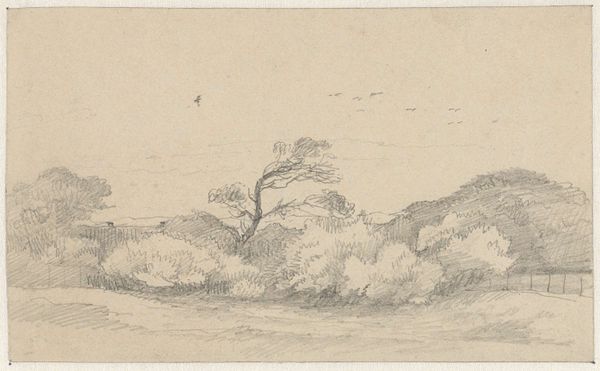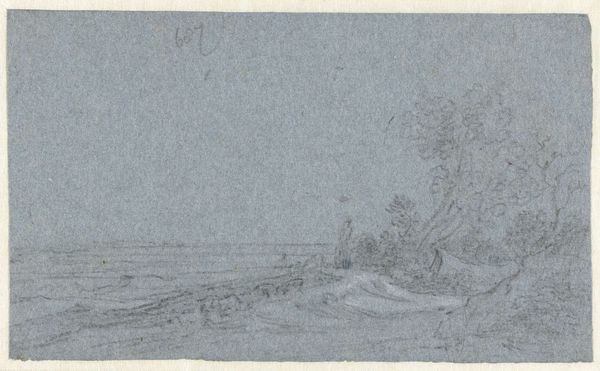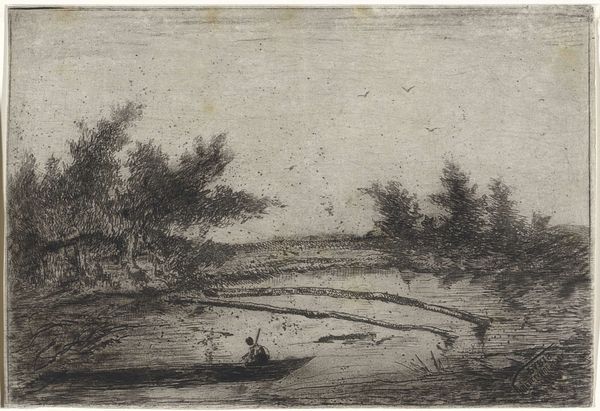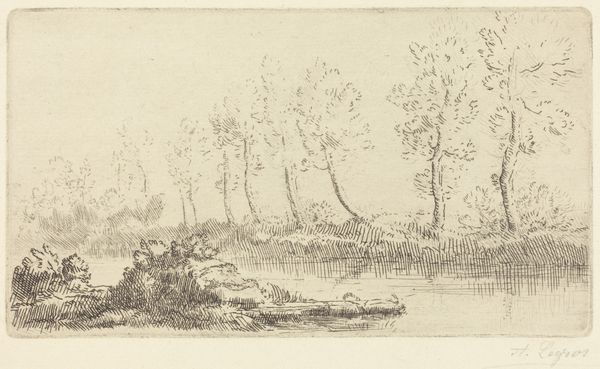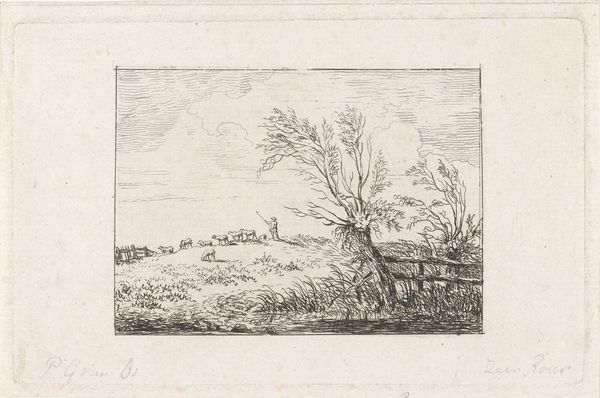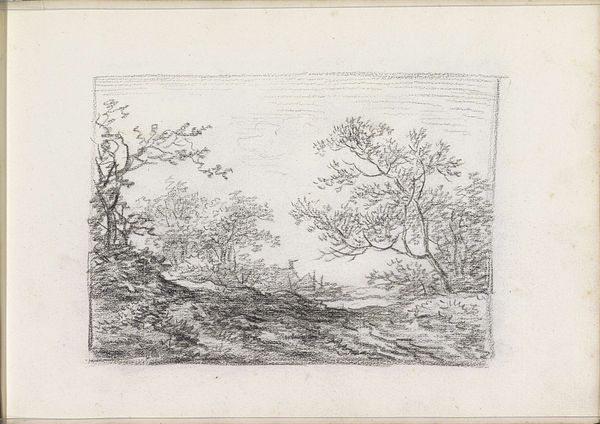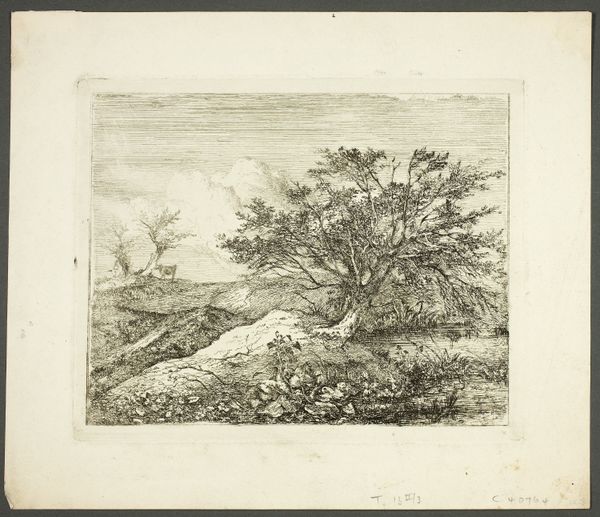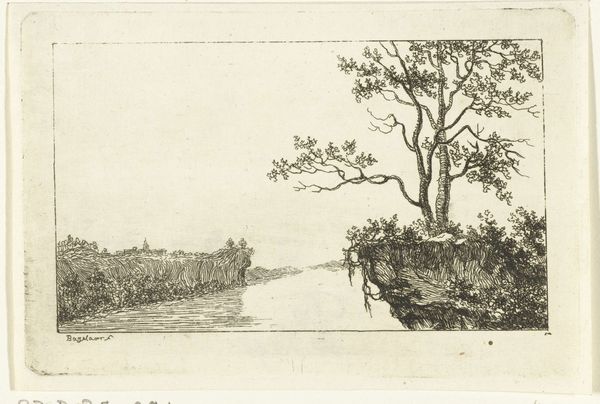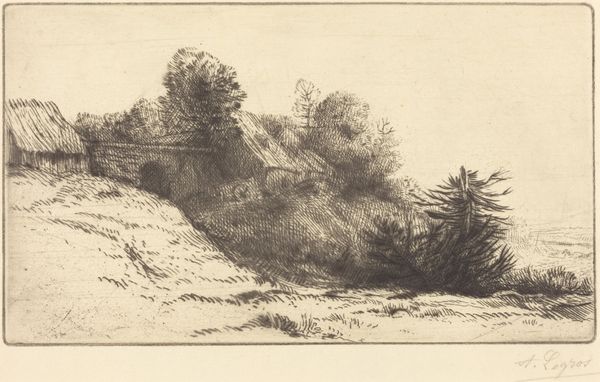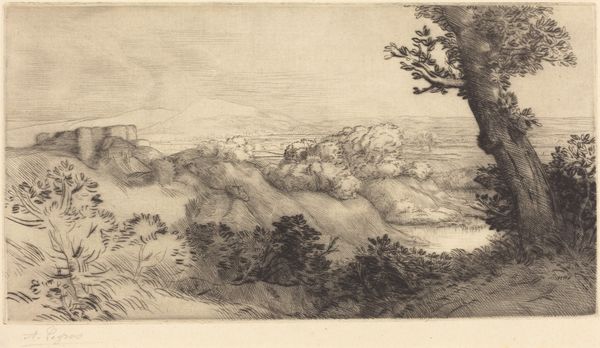
drawing, print, etching, ink
#
drawing
# print
#
etching
#
landscape
#
etching
#
ink
#
realism
Dimensions: height 57 mm, width 83 mm
Copyright: Rijks Museum: Open Domain
Editor: We're looking at "Dune Landscape with Bushes" by Andreas Schelfhout, an etching created sometime between 1802 and 1870, now at the Rijksmuseum. It's so delicate; the lines are so fine. The whole scene has a tranquil, almost melancholic feel. What do you see in this piece? Curator: Immediately, I see the enduring symbolism of the landscape. The dunes, in particular, function as a kind of threshold, a liminal space between land and sea, between the known and the unknown. That scraggly bush, clinging to the dune, also evokes a potent symbol of resilience. It’s a figure of enduring life in the face of stark conditions. What does it say to you? Editor: That's a perspective I hadn't considered! I mostly saw the simplicity of it. A straightforward, realistic depiction of nature. Curator: And is that simplicity not, in itself, a statement? Consider the cultural context. During this period, realism was often a vehicle for exploring national identity and celebrating the beauty of one's homeland. Schelfhout is offering a specific vision, a celebration of a Dutch landscape stripped bare. Editor: So, the dunes aren't just dunes; they represent something bigger? Curator: Precisely! Landscape painting is rarely just about the landscape. It carries emotional, cultural, and psychological weight, echoing societal values. Think of the “Dutch Golden Age.” Can you draw a line through that historical continuity? Editor: Now I see it; the etching shows this national landscape. It brings to life what it means to be Dutch by capturing what Dutch people recognize around them. Curator: Exactly! Editor: This really changes how I view landscape art! Curator: Art continues to evolve with new values and knowledge to give fresh eyes for its beholders.
Comments
No comments
Be the first to comment and join the conversation on the ultimate creative platform.
